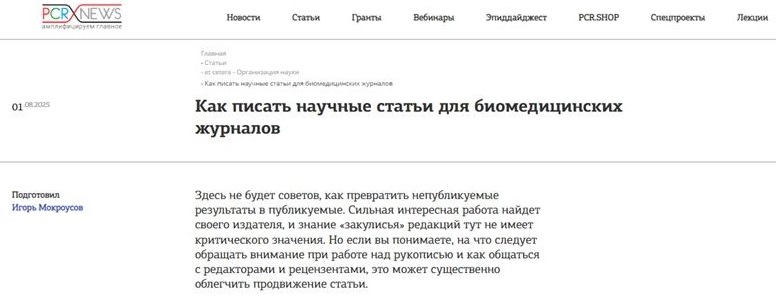
On July 31, the leading Russian scientific news portal PCR.NEWS published an article by the head of the laboratory of molecular epidemiology and evolutionary genetics, Igor Mokrousov, PhD, DSc, "How to write scientific articles for biomedical journals."
The article is a brief and illustrated version of the author's full-text paper in the Russian Journal of Infection and Immunity published in parallel in Russian and English. Itself is based on the lecture “How to write a scientific article and how to interact with editors and reviewers”, presents the author’s personal views on the editorial process and is based on his 20-year experience as a reviewer and editor of scientific journals in the field of evolutionary genetics and medical microbiology.
A scientific article is based on the results of the research project. A real implementation of the project may be far from expected, some experiments may fail or hypothesis may be wrong. Nonetheless, with sufficient perseverance, intensive thinking and imagination it may be possible to make sense of limited or strange data. The author presents the key points regarding writing of scientific article, choice of a target journal, submission and follow-up, until the successful publication. Different and interconnected issues regarding scientometrics, spam journals, plagiarism, altmetrics, etc are discussed. “In my strong opinion, Science is related to Art, but it is not Art. Painting should not necessarily mean anything. In contrast, scientific data should be not only described, but placed in the context, interpreted and explained. Moreover, I was pleased to recently find out that similar ideas correlating science and art have been put forward by eminent scientists, in particular, within the notion of the elegance of science” says Igor Mokrousov.
PCR.NEWS: https://pcr.news/stati/kak-pisat-nauchnye-stati-dlya-biomeditsinskikh-zhurnalov/
Link to the article: Mokrousov I.V. Writing scientific articles for a biomedical journal // Russian Journal of Infection and immunity. - 2025. - V. 15. - No. 2. - P. 209-226. doi:10.15789/2220-7619-SWF-17909
